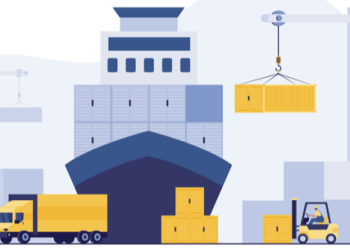Thanks to SEO, or Search Engine Optimization, you can increase the value of your website and get to the top of the search engines. With SEO studies, you can make your searches by increasing your site for website engines.

A/B Testing: It is the testing of interfaces prepared differently from each other in order to analyze user behaviors.
AJAX: It is the process that allows any web application to exchange data without the need to refresh the entire page.
Keyword: Words or sentences that users will use to reach you.
Keyword Density: Indicates how often your keywords are used on your website.
Search Volume: It is the term that tells how many users are searching for your keywords on a monthly basis.
Average Visit Duration: Indicates the time spent by a user visiting your website.
Backlink: Having an important role for SEO studies, backlink represents links from another website to your site.
Bounce Rate: Shows the percentage of time that users who visit the website leave your page.
Bot: They are virtual users used for different operations on websites.
Breadcrumb: It is a map that allows users and bots visiting a website to navigate the site more practically. It shows users which page they are on hierarchically. For example; Home -> Categories -> Shoes -> Flats
Cache: It keeps the websites you visit from its memory with all its components, and when the user visits the same page again, it is met with the last version kept in the cache.
Call To Action: These are the buttons used to direct users to different pages within the site and to increase the time they spend on the site.
CDN: It is the general name of the servers used to increase the browser performance by calling the source files on the websites from a different source.
CCTLD: It is the area code of the countries on the internet and is located at the end of the domains. For example: digitalmarker.com.tr / digitalmarker.co.uk
Content: All the content written on your website.
Cookie / Cookies: They are data definition files placed on your device by websites. Thanks to these small files, the site can recognize you when you visit the same website again.
Conversion Rate: It is the rate at which users who visit your website perform the conversion process (form filling, product purchase, etc.). Calculated as total conversions / total visitors.
CRO / Conversion Rate Optimization: It is the whole of the optimizations made to increase the conversion rate.
CSS: Font, size, color, background, etc. The code language that determines all the formats and styles is called CSS.
Data: All of the information available on the Internet is called data.
Deindex: It is the process of removing/indexing a web page indexed by search engines.
Disavow: The backlinks your website receives are rejected through Google Search Console.
Directory: It is the name given to the storage area of the websites of the search engines.
DNS: The unique IP number your website has.
Dofollow: They are the reference links that allow the relevant page and domain value to be shared with the site to which the link is given in the backlink given from one website to another website. If no rel definition is specified by search engine bots on the HTML side (nofollow, noreferrer, etc.), it is considered to be an automatic dofollow link.
Domain: The name/domain name owned by a website is called domain. Each domain must be unique and must not contain Turkish characters.
Domain Rate / Domain Authority: It is used to predict the ranking of the website in search engines. It works with a 1 to 100 scoring system and was developed by Moz.
Door Way Page: It is an old method used to provide backlinks from the websites prepared as a front to the existing website.
Dwell Time: It is the time between the search results for the user who comes to your website to return to the search results again.

External Link: An external link is a link from one website to another website.
Featured Snippet: Usually via search engine What is it? How is it done? It is the field that lists the results on the search page without requiring a visit to the website.
First Contentful Paint: It is the value that shows how long it takes a website to load. The lower the FCP value of your website, the faster your website is.
Filezilla: It is the tool used to reach the server of the websites.
FTP: It is the name given to the server directory where the website files are located. FTP is used to store and exchange website server files.
Favicon: Icons specially prepared for your brand in browser tabs.
Google Search Console: Google’s free website traffic tracking tool. Unlike Google Analytics, it shows the user directly from the search results. The site map of the website, robots.txt, is the address where responsive analyzes and updates are shared with Google.
Latent Semantic Indexing (LSI): It is the compatibility of the keywords used in the website content with each other.
Image Alt Tag: These are the tags that describe what the images on the website are about.
Image Title Tag: These are the tags that describe what the images on the website are.
Google BERT: It is an algorithm developed by Google for search engines to understand spoken language.
Google Pirate: It is the algorithm that ensures that the websites that do not comply with the standards set by Google are reported and the sites that are the subject of the complaint are removed from the search results.
Heading Tag: It means header tag in HTML-based browsers.
H1: It is the primary title tag that gives information about what the page on the website is about.
H2: It is the title tag used to express the subheadings of H1.
Hreflang Tag: It is used to indicate that different languages are available on websites. It is the tag that informs search engines that you have a multilingual structure.
Hosting: It is the storage area where the files of a website are hosted. Hosting is the area where the images, HTML, CSS and JS files on the website are hosted.
htaccess: It is a file that allows you to make settings changes on web domains used by the network server such as Apache.
HTML Lang Tag: It is the tag that tells search engines the language of your website.
HTTP: It is the protocol that enables websites to be viewed. It determines the rules of exchange between computers and server.
HTTPS: It is known as the Secure Text Transfer Protocol. It basically does the same job as HTTP, but HTTPS comes to the fore with its security.
IP: The unique address that enables data exchange between websites and computers.
Index: It is the display of the pages and content on the website to users by adding them to the search engine index.
Internal Link: It is the link output of the pages to each other within the same website.
Infinite Scroll: It is the display of new pages, products, services as users scroll up the page.
User Interface (UI): It is the interface design of the software focused on user experience. It provides interaction between the user and the software used. For more information, you can review our content on Web Interface Design (UI).
User Experience (UX): It is concerned with enabling the users of the site or application to interact more comfortably with the service they use.
Broken Link/URL: Any URL on your website is not opened and is expressed as a 404.
Link: These are the texts that can be clicked on the website, they are used to facilitate navigation within the website.
Log & Log File: The records of the transactions (ordering, form filling, etc.) performed on the website are called Log. The place where the records in the log are stored is called the Log File.
Landing Page: It is used as a landing page in digital advertisements. It consists of a single page and is created to activate the user. What is a Landing Page for more information? You can review our content on the subject.
Lazy Load: It is the loading of the media content on the website only when the area they are in is shown. By using lazy load, you can delay the loading of images that are not on the screen, make the site open faster, and prevent unnecessary load on the site.
Link Building: It is used under two different headings as on-site and off-site link building. It is the process of linking between pages by adhering to the same domain in intra-site link building. Off-site link building is the output of links from different websites.
Long Tail Keyword: These are keywords that consist of a minimum of 3 words and make the search term more specific.
Local SEO: SEO works are carried out only in designated regions (Istanbul, London).
Meta Title: It is the name given to the title of the sites listed in the results of search engines.
Meta Description: It is the name given to the descriptions of the sites listed in the results of search engines.
Meta Keyword: These are meta tags that express to search engines which keywords the relevant page addresses.
Meta Tag: It is the name given to the meta tags usually created for search engines.
Noindex: It is the meta tag used to prevent the entire website or certain pages from being indexed by search engines.
Nofollow: It is a tag that does not want to be followed by search engine bots from a website within the same site or that the reference value is not transferred in link exits made to a different website.
Noopener: The cookies, sessions, etc. from the previous website. It is a tag that prevents information from being transferred to different websites by blocking it.
Noarchive: It is used to not show the HTML state stored in the cache side of a website. Websites with cache issues often use this tag.
Noimageindex: It is the tag used to prevent the indexing of images on the web page.
Noreferrer: It is usually used with the noopener tag and prevents the referrer information from being transferred to the newly opened page.
Nosnippet: It is an existing tag that indicates that we do not want any text snippets to be shown to the Google bot from the relevant page.
Notranslate: It is the meta tag that prevents automatic translation of the website according to browser languages.
Onpage SEO: It means on-page SEO. It is the name given to all the work done within a website.
Offpage SEO: It means off-page SEO. It is the name given to all the work done outside of a website.
Open Graph Tag: Meta tags that determine how a website’s content will appear on social media accounts.
Organic Search: It refers to the behavior of users who directly reach results by querying on search engines.
Organic Traffic: Refers to the traffic of users who come directly to the website after organic search.
Orphan Page: Pages that do not receive a link from any page in the website are called orphan pages.
Session Duration: It is the term that expresses the average time that users spend on the website.
Pagination: It is the process of pagination, segmentation and numbering of pages on websites.
Paid Search: Refers to ad queries and clicks in search engines.
Paid Traffic: It is used to express the traffic obtained from advertising results such as search engines, social media, Adsense.
Pogo Sticking: It means that users who visit the website leave the site immediately. It creates a negative situation for user behavior analysis.
Position: It shows the position of the website in the search results.
Competitor Analysis: Monitoring and analyzing your competitors’ websites and work.
Responsive: It is the compatibility of your website on device types such as desktop, mobile, tablet.
Rich Snippet: It is a kind of HTML tag that helps search engines to make sense of a page, includes page summary, visual and media content, breadcrumb and other structural data markup on the page.
Robots.txt: It is the first file type encountered by bots visiting the website. These bots, sent by search engines, visit your site to crawl your website and determine your sitemap.
Page Speed: It is the scale that determines the average load times of DOM elements (CSS, JS, Media Contents) on your website’s pages.
Page Authority: It is the page score based on the inbound external links, keywords and organic visit of the pages on the website.
Schema: It aims to help search engines better crawl and index websites. It can effectively support the performance of search engines.
SERP: It is the name of the list of results that appear when you search for the keyword in search engines.
Server: Web site hosting and all design, JS etc. that performs network requests to a web site. It is a storage device that contains files.
Server Response Time: It is the time to send the items requested from the server so that the web page can load.
Short Tail Keyword: These are keywords consisting of 3 words or less.
Sitemap: It is a structured list of pages that you want search engine bots to crawl and index on your website.
SSL Certificate: It is the secure version of the web protocol “http” that provides secure data transfer. It appears as “https” and encrypts all requests made on the web page. In this way, data such as bank information, credit and personal information are protected. It is a very important metric for search engines.
Subdomain: A sub-website opened with the domain extension of the website, known as a subdomain. For example, if the main site is “markergroupe.com”, “seo.markergroupe.com” is the subdomain.
Subfolder: It is the name given to the directories that come after the domain of the website and are opened in the form of folders. For example, if the main site is “markergroupe.com”, “markergroupe.com/image” is a subfolder.
TTFB (Time To First Byte): When opening the website, it sends a request to the server. It is the response time for the request sent.
URL Structure: It is the structure of URLs. URLs should contain keywords that describe the page content to users and search engines and should be understandable.
Visibility: Refers to the SEO visibility of the website based on search results.
White Hat SEO: It is the whole of SEO work that optimizes the metrics that search engines deem appropriate, naturally and in the most appropriate way.
Yandex Metrica: It is a free site development & analysis tool developed by Yandex. For more information, What is Yandex Metrica? You can review our content on the subject.
Zero Position: It is the position shared with the user in the form of summary information at the top of the search results.
Contact us to learn about the services provided by Marker Groupe ou can contact us via the MarkerGroupe.com website or via the e-mail address [email protected].












